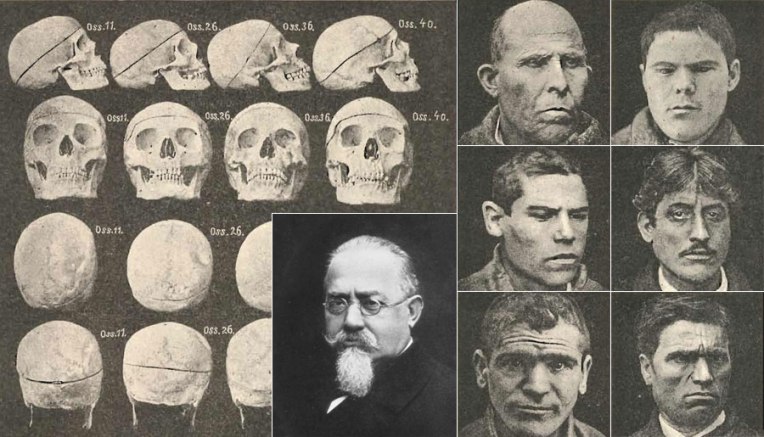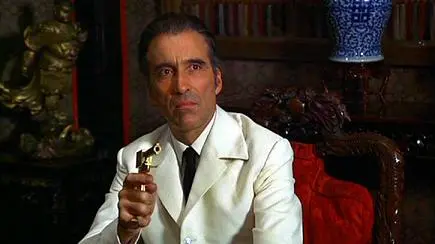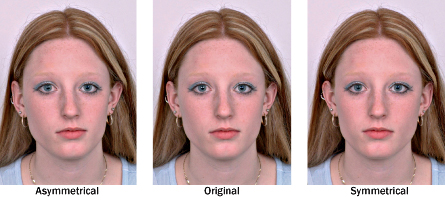A Jury’s decision at the end of a criminal case has been an established part of English law since 1168 when the first murder trial took place. Benedict Graymond was tried and founder guilty for murder using a garden tool. How did the jury then and the ones that take place today come to their conclusion, is it a rational and considered analysis of the evidence culminating in the majority decision, beyond reasonable doubt of a group of ordinary citizens (peers) or, are there key social cognitive elements influencing the final verdict that could be confounding? The answer is most likely a combination of both.
A key flaw into research investigating how juries reach a verdict, is the extent to which they are both reliable and ecologically valid. The Royal Commission on Criminal Justice (1993) recommended that section 8 of the Contempt of Court Act 1981 should be amended to permit genuine academic research but this was not implemented. This law prohibits any person to obtain, disclose or solicit any particulars of statements made, opinion expressed, argument advanced or vote cast by members of a jury in the course of their deliberations. The discussion of the evidence of a case is therefore singularly considered by 12 individuals over the age of 18 and up to 70, making up the jury.
Hastie’s influential 1983 book investigated a range of issues relating to jury decision-making including the contents and dynamics of the deliberation process. Using primarily Mock trials, which is a close simulation of a full trial with all aspects replicated and observed however without the inevitable consequence of the jury’s decision the verdict, Hastie attempted to piece together the nuances of trial by jury. The Mock Jury could be recorded, filmed, their interactions and discussions dissected and analysed to identify the secrets of the decision-making process. However, without any consequence to the decision, either guilty or not guilty the weight of that decision is purely academic. How is it possible to replicate the bias, unconscious or otherwise, the empathy with the victim or defendant and knowing your decision is contributing to possible life-altering or even life-threatening consequences?
Hastie identified a sequence that the jury goes through in terms of their interactions to come to a decision about the verdict;
In the U.K, the evidence of the case is presented and examined in front of a judge and jury by the defence and prosecution in an adversarial approach to justice, compared to the inquisitorial where it is the Judge that takes the active role and the presentation of a bias case is avoided.
The adversarial approach, therefore, allows for a degree of persuasion of either how to view the context of the evidence or the credibility of a witness. There are many ways in which a barrister, may try to influence the jury many of which are well documented in psychology. For example, Hovland’s Yale Model of Communication identifies a range of factors that increase rapport and influence to provide a more persuasive argument. The credibility of the source, the message itself, the medium in which the information is being given, who is the target audience and the formality of the situation are all key. The model isn’t a specific forensic model as it is used widely in health and business situations, so is there any forensic research investigating methods of how the message is presented that can have a significant impact upon the verdict?
The Application of Cognitive Psychology in the Courtroom
Cognitive Psychology has long provided experimental evidence to support the view that information taken in at the beginning and end of a set of data tends to have the greatest level of recall. This is known as the Primacy/Recency effect. The serial position curve (below) shows where information tends to have the highest level of retention, based upon whether they have had enough rehearsal to be stored in the long-term memory or as in the case of the recency effect are still fresh in the short-term memory. Below are the results of Murdock (1962) providing evidence to support this idea.
If this is applied to the order of which a barrister decides to place their witnesses to have the biggest impact it would follow to put their strongest witnesses at the beginning or end, irrespective of where they fit in the narrative of the crime. This technique to persuade the jury by manipulating the order that the witnesses are presented is called ‘Witness Order’. The alternative method often employed is to keep the order of witnesses presented in court consistent with the order of the narrative or story of events, this is referred to as ‘Story Order‘. Pennington and Hastie conducted a piece of research to investigate using a mock trial the effectiveness of the two approaches.
The results showed a lack of construct validity for the impact of the primacy/recency effect in the context of ‘Witness Order’. So why didn’t it work? Murdock’s original study, like many memory based laboratory experiments, was based upon very simplistic single words whereas the complexity and nuances of content in a trial is vastly different. The information is far too complex to simply be taken at face value of a over simplistic input, storage and retrieval model. Pennington and Hastie discussed that jurors were likely to naturally reassemble the chronological order of events to give them the best opportunity of understanding them, into a schema or story and therefore the altering of the order just confused that process, especially when the alternative approach of ‘Story Order’ was based upon that idea. What can we learn from Pennington and Hastie’s research? The applied context seems to be clear; Story order is likely to be the most persuasive method of presenting witnesses in court and if the adversary is using witness approach – the impact will be all the greater.
The application of Social Psychology within the courtroom.
One of the most well-known pieces of Social Psychology investigation the notion of conformity was conducted by Stanley Milgram’s mentor, Solomon E. Asch (1951). Asch conducted a piece of research investigating the extent to which participants would change their response to a highly simple task on the basis that their answer would conform to that of the rest of the group, even if it was obviously incorrect. Asch set up a situation where a group of men were given a simple line comparison task to complete, with each in turn speaking out their answer. Simple.
Asch manipulated the situation by ensuring only one person in the room was a naive participant whilst everyone else was part of the research, a confederate, a stooge of Asch’s. Would someone really knowingly give an incorrect response to ensure they didn’t go against the majority view? If it does happen then this may have major consequences for the reliability of jury decision making.
On average 1/3 of participants changed their response as a result of majority influence. This effect dramatically reduced when 1 other person gave a different answer -it seems, in the laboratory at least, you only need 1 ally to have the courage of your convictions.
However, once again we have the consequence issue, Asch’s research was done in a very artificial environment completing an artificial task, how much confidence can Forensic Psychologists have in the role of majority influence changing decisions in an actual jury deliberation. Again ‘mock juries’ can provide some insight in terms of the impact of a complex task in addition to a formal setting but we are still without those all important consequences of the decision and thus ecological validity.
The influence of the Minority on the Jury
Nemeth and Wachtler were interested in another area of social influence, that of minority infleunce. Could the consistent and seemingly autonomous, (acting out on one’s own decisions) persuade the wider group to come to one person’s view? The famous courtroom drama ‘12 Angry men‘, used this idea as a plot to show how a single voice could win over the many. Review Nemeth’s research below- do you think it could occur outside of an experiment and a film?
Many psychologists take the view that it is indeed the small dissenting voices that over time can shift the views of many and society’s views. The Suffragette movement could be one example of an initially minority view being accepted by the mainstream and changing the law. When you think about it there have been many shifts in societies views that were once the view of the few.
The role of Attractiveness influencing the jury’s decision.
Edward Thorndike coined the term ‘Halo Effect‘ to describe The Constant Error in Psychological Ratings’. A form of bias that seduces and individual of having their perception of someone shaped by a single characteristic usually typically their attractiveness, (The ‘Horns effect’ is the opposite paradigm). Are we so superficial as to be taken in by someone just because of the way we look? Watch the video to take a look at how it works.
Castellow decided to investigate how attractiveness might influence a jury. Castellow 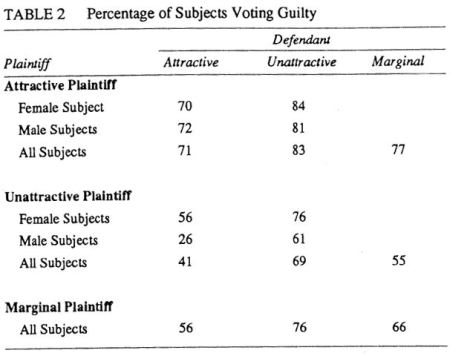 found that there was a statistically significant difference between how jurors viewed attractive vs unattractive defendants. Attractive defendants were found guilty in 56% of cases where it was 76% for the unattractive ones. This research and many like it has confirmed this finding, however again only mock trials could be used reducing the ecological validity. However, it can be said that a defendant may want to ensure they are perceived in the best possible light by the Court by providing a smart appearance. The evidence could also be argued to support Lombroso’s view of the criminal man. Is there a downside to being attractive? Some new thinking and research in the area may shed doubt on the universal appeal of the halo effect.
found that there was a statistically significant difference between how jurors viewed attractive vs unattractive defendants. Attractive defendants were found guilty in 56% of cases where it was 76% for the unattractive ones. This research and many like it has confirmed this finding, however again only mock trials could be used reducing the ecological validity. However, it can be said that a defendant may want to ensure they are perceived in the best possible light by the Court by providing a smart appearance. The evidence could also be argued to support Lombroso’s view of the criminal man. Is there a downside to being attractive? Some new thinking and research in the area may shed doubt on the universal appeal of the halo effect.
Confidence as a variable for persuading the jury.
‘You can be 100% confident and 100% wrong……’
A consistent and autonomous approach has been seen to persuade a majority to a new way of thinking (Nemeth), so it follows that an individual who is confident may also excerpt a similar degree of influence. Penrod an d Cutler conducted research manipulating a range of factors to measure their impact on a jury. Using a sample of undergraduates, eligible and experienced jurors, Penrod et al showed a videotaped trial of a robbery was shown in which eyewitness identification played a key role. The witness testified that she was either 80% or 100% confident that she had correctly identified the robber. There were nine other variables all at both high and low levels, depending on the conditions. The participants experienced either the high or low condition variables on a random basis and were asked to decide whether the robber was guilty or not guilty after watching the film. Witness confidence was the only statistically significant variable. The evidence in this field is consistent in showing that confidence is a poor predictor of witness accuracy. Furthermore, the trust that jurors place in the confidence of the witness is undiminished even if the judge advised the jury to be wary of it.
d Cutler conducted research manipulating a range of factors to measure their impact on a jury. Using a sample of undergraduates, eligible and experienced jurors, Penrod et al showed a videotaped trial of a robbery was shown in which eyewitness identification played a key role. The witness testified that she was either 80% or 100% confident that she had correctly identified the robber. There were nine other variables all at both high and low levels, depending on the conditions. The participants experienced either the high or low condition variables on a random basis and were asked to decide whether the robber was guilty or not guilty after watching the film. Witness confidence was the only statistically significant variable. The evidence in this field is consistent in showing that confidence is a poor predictor of witness accuracy. Furthermore, the trust that jurors place in the confidence of the witness is undiminished even if the judge advised the jury to be wary of it.
Reactance Theory and The Backfire Effect in the Courtroom
The notion of free will is still a matter of huge debate in Psychology. As many approaches (Social, Cognitive et c.) are trying to provide singular deterministic factors establishing cause and effect however without a unifying paradigm, the discipline will always be fragmented. Maybe free will is one of the missing elements that would contribute to a more unified psychology?
c.) are trying to provide singular deterministic factors establishing cause and effect however without a unifying paradigm, the discipline will always be fragmented. Maybe free will is one of the missing elements that would contribute to a more unified psychology?
Reactance theory, Brehm (1968), suggests that when someone’s notion of freedom to choose a specific course of action is threatened this motivates them to actually be more likely to exhibit that behaviour, to reassert their free will as a form of reactance. When we are vigorously told not to do something this motivates us to actually do it. Pennebaker and Sanders (1976) put one of two signs on University bathroom walls. One read ‘Do not write on these walls under any circumstances’ whilst the other read, ‘Please don’t write on these walls.’ A couple of weeks later, the walls with the ‘Do not write on these walls under any circumstances’ notice had far more graffiti on them. This is often also referred to as the ‘backfire effect‘, the notion that someone is trying to persuade someone else so much and it backfire’s as they do the opposite.
Pickel (1995) applied this to a court setting. Could Barristers manipulate/persuade the jury into having a reactance against the judge? In court, there are some types of evidence that are not allowed, due to being collected illegally (such as wire taps), or it is unreliable such as polygraph results? What if, for example, the prosecution introduces evidence that they know is ‘inadmissible‘ knowing that the Judge will have to tell the jury to ignore it? This may then motivate at least some of the jury members to react against the Judge’s orders of ‘not taking any notice of the evidence’ and actually persuading them otherwise. In Pickel’s research participants listened to an audiotape of the trial, which contained a piece of critical evidence. The critical evidence was information about a prior conviction of the defendant’s, which therefore, favoured the prosecution team and would have been inadmissible. The critical piece of evidence was a prior conviction of the defendant. The item was objected to by the attorney of the defence team. The conditions varied at this point, some participants would hear the judge allow the evidence and the others would hear it disallowed.
When the jurors were instructed to ignore the inadmissible evidence this ruling was sometimes supported with a legal explanation. The judge would express that the evidence should be disregarded as it might be suggestive of bad character and bias the jury members. In one of the conditions no legal explanation was given when the evidence was ruled as inadmissible.
Participants were then asked to complete a questionnaire asking them to make several decisions about the case:
- Verdict: Guilty or not guilty
- Estimate the probable guilt of the defendant
- State how much the knowledge of the prior conviction caused them to believe the defendant was guilty on a scale of 1 to 10.
- Give a rating of the credibility of each witness.
Calling attention to inadmissible evidence makes it more important to the jury and they pay more attention to it. This has some real life application as it is a tactic that could be used by prosecution and defence to draw attention to specific pieces of evidence, which may confound upon the juror’s verdict despite being ruled as inadmissible.
Once again, a lack of ecological validity via a mock trial impacts on the usefulness of the findings,
The right to a fair trial – Does the use of shields in Court give an unfair advantage?
The has been huge steps over the past 30 years to ensure that children as witnesses receive special attention in terms of their testimony. The Cognitive Interview has ben a useful methodology in ensuring the testimony of many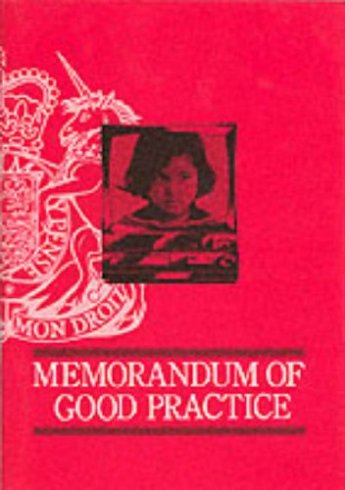
witnesses, young and old, is gathered reliably and without bias. The Memorandum of Good Practice (1992) provides a range of techniques and methods to ensure that a child can provide a coherent testimony. This is important as Psychologists have identified how the testimony needs to be perceived as credible by the jury if it is to be believed. This is defined as; Credibility Inflation: when the child’s testimony is more believable, because they are not so distressed and can answer questions in a confident way. Credibility Deflation: when the child’s testimony is seen as unreliable, because they are distant and needing special support. Such methods of support could be a shield to provide a physical block between witness/victim and defendant, another method is to provide a video link to another part of the court, to again allow a reduction in anxiety of the witness. Does this imply guilt? Does this bias the jury to a viewpoint that the defendant is so dangerous that physical barriers are required to ensure everyone’s safety, thus confounding the right to a fair trial.
Ross et al 1994, conducted research investigating the impact of both shields and videotapes, using a mock trail. They found no significant difference in the percentage of convictions. The control group received 51% guilty verdicts, The Shield: 46% and Video: 49% a nominal variation of 5% between all condition. The findings show no significant difference across the conditions a guilty verdict was slightly more common in open court and slightly less likely when the child was screened, but these differences are not statistically significant. These results suggest that protective shields and videotaped testimonies can be used for child witnesses in a way that does not prejudice the jury against the defendant, but it is important that these measures are used carefully.
And finally……
It seems clear that there are seemingly many factors that can influence in the courtroom, attractiveness, the role of shields, the order in which evidence is presented, the confidence of a witness, the strength of a Judge’s instructions to ignore evidence as well as key influences within the deliberation room, the role of the majority and the influence of the minority, however all of these pieces of evidence have been collected using artificial environments and therefore, their application to real-world settings are always going to be difficult to confirm.
There are many other issues such as age, race and gender that also have been explored using similar mechanisms.
UPDATE Nov 2015; Read the story here of a juror who was so bored that she posted her thoughts on the case…to Facebook!
Further Reading/activities
- Do juror pressures lead to unfair verdicts? By Monica K. Miller, PhD, JD, University of Nevada–Reno
Brian H. Bornstein, PhD, University of Nebraska–Lincoln March 2008, Vol 39, No. - http://homepage.ntlworld.com/gary.sturt/crime/jury.htm
- Hasite R et al (1993) Inside the juryHarvard University Press (extract)


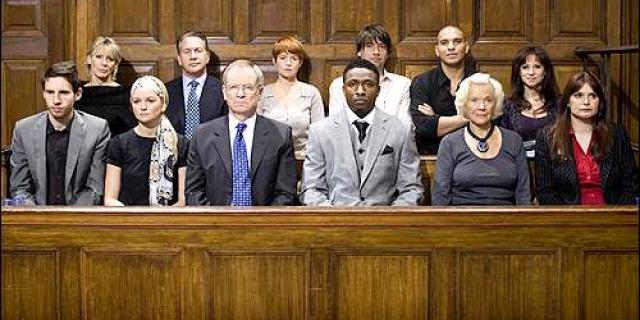
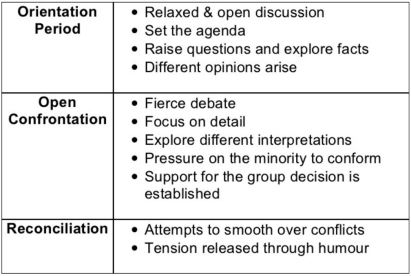
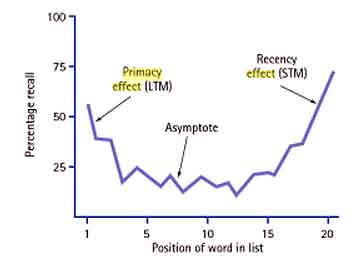

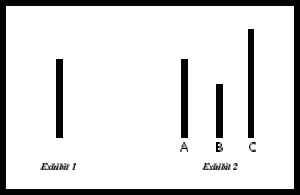
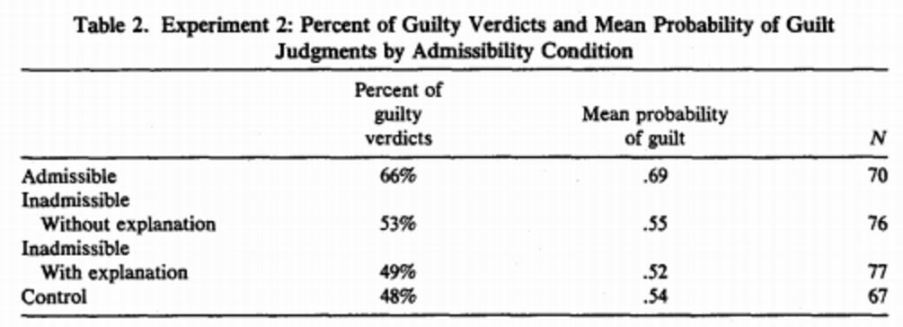
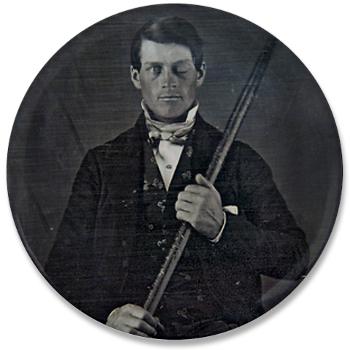



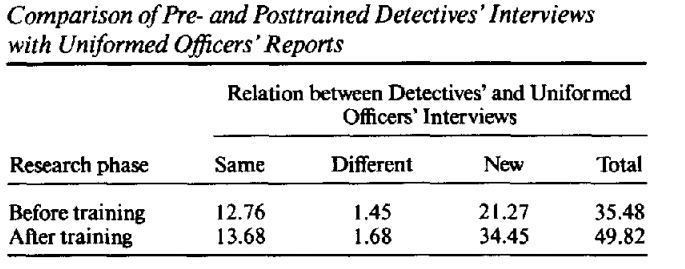
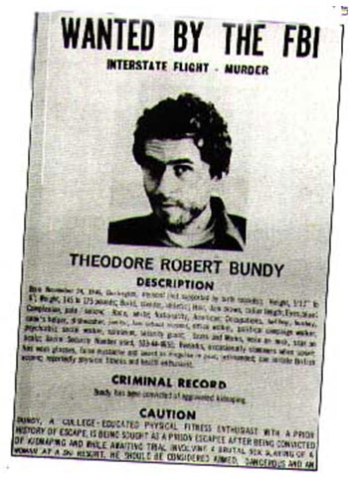
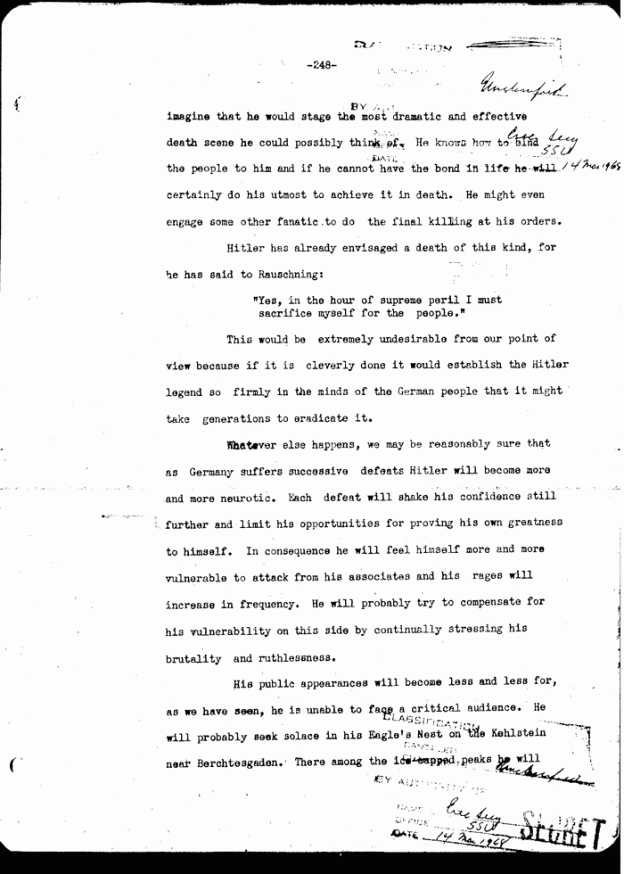
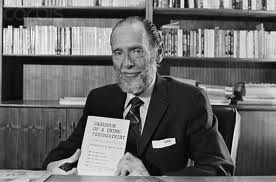 exasperated turned to local psychologist, Brussel. The profile stated the suspect was most likely middle aged, overweight, and probably not married. It was possible that he lived with a relative, maybe a brother or sister. The offender probably had skills in engineering or mechanics, and may have come from Connecticut or surrounding areas. According to Brussel, he noted that the bomber had a particular grudge against Consolidated Edison, which was New York’s main power company at the time.
exasperated turned to local psychologist, Brussel. The profile stated the suspect was most likely middle aged, overweight, and probably not married. It was possible that he lived with a relative, maybe a brother or sister. The offender probably had skills in engineering or mechanics, and may have come from Connecticut or surrounding areas. According to Brussel, he noted that the bomber had a particular grudge against Consolidated Edison, which was New York’s main power company at the time.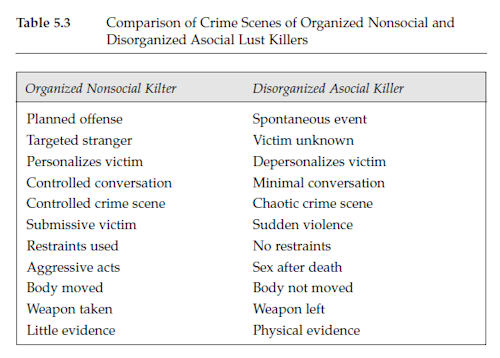

 Cesare Lombroso 1876
Cesare Lombroso 1876